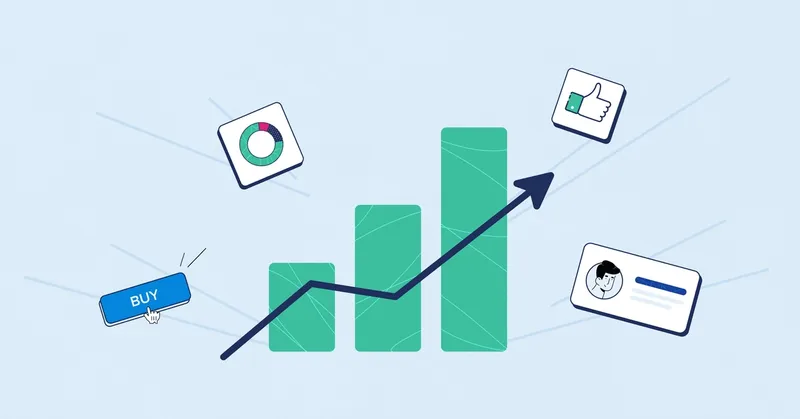How to Accurately Calculate Conversion Rate for Your Business
In the world of business analytics, few metrics hold as much strategic value as conversion rate. It measures how effectively your business turns prospects into customers, subscribers, or users—offering a clear view of performance and helping guide decision-making. Accurately learning how to calculate conversion rate is crucial for tracking success and refining your approach. Here’s how to compute conversion rate with precision and use it to drive smarter strategies.
Defining What a Conversion Means for You
Before doing any math, clearly define what counts as a “conversion.” This will vary depending on your business model and goals.
E-commerce: A completed purchase
SaaS company: A trial or subscription sign-up
Content website: A newsletter subscription or content download
Vagueness undermines accuracy. If you’re tracking sales but counting “engagement” like clicks or likes, your numbers won’t reflect true performance. Be specific and ensure your team shares the same definition.
For example, if a retailer launches a new product page, a conversion should be a completed purchase—not a page view or add-to-cart. Clarity here ensures meaningful, actionable data.
The Formula: Simple but Powerful
At its core, the conversion rate formula is:
Conversion Rate = (Conversions ÷ Total Visitors) × 100
If 1,500 people visit your site and 45 make a purchase:
(45 ÷ 1,500) × 100 = 3%
This tells you that 3 out of every 100 visitors are converting. While the formula is simple, its value lies in its adaptability to any scenario where action is the goal.
Step 1: Gathering Reliable Data
Accurate calculations start with accurate data. You need two clean numbers:
Conversions: The defined actions tracked using tools like Google Analytics, CRM software, or e-commerce dashboards.
Visitors: The total audience exposed, which could mean website hits, ad clicks, or email opens.
Use tracking tools to capture specific events like “purchase complete” or “form submitted,” and verify them against internal records. Even minor errors—like missing 10 conversions—can skew results significantly. Trustworthy data is foundational.
Step 2: Doing the Math Correctly
Once your data is clean, apply the formula carefully.
Email campaign example: 200 form completions from 10,000 subscribers
(200 ÷ 10,000) × 100 = 2%
Paid ad example: 24 downloads from 800 visitors
(24 ÷ 800) × 100 = 3%
Use precise tools—don’t round unnecessarily. A small difference in calculation can lead to misguided decisions, especially at scale. Always confirm you’re getting exact percentages, like 2.31% instead of a vague “2%.”
Step 3: Validating the Numbers
Double-check for logical consistency:
Conversions should never exceed visitors.
For example, if 50 people visited and 100 conversions are logged, something’s off—likely a tracking error or bot activity.
Timeframes must match.
Comparing daily visitors to monthly conversions leads to inflated or misleading percentages. Align both data points to the same period—daily, weekly, or monthly.
Verifying these factors keeps your data grounded in reality and prevents false signals.
Understanding What Your Conversion Rate Tells You
A raw percentage means little without context. A 3% rate might be excellent for one campaign and underwhelming for another.
E-commerce: 2–4% is typical
Lead generation: 5–10% is common
Content marketing: Varies widely based on intent and traffic source
Compare your rates to industry benchmarks or your past performance. If you previously hit 5% and now see 3%, investigate what changed. Segment your data to uncover hidden insights—like higher mobile conversions compared to desktop.
Turning Insight Into Action
Knowing your conversion rate is just the beginning. The next step is using it to improve performance.
Low rate? Revisit your landing page design, calls to action, or offer clarity.
High rate? Identify what’s working and scale it.
For instance, if your checkout process is too complex, simplifying it might boost your rate from 2% to 5%—a significant lift without increasing traffic. Even identifying where users drop off (e.g., during form fills) can inform changes that drive results.
Connecting Conversion Rate to Cost
Conversion rate becomes even more valuable when tied to your budget. Suppose you spend $1,000 on a campaign:
At a 1% conversion rate with 10,000 visitors = 100 conversions
At a 2% conversion rate = 200 conversions—double the output with no extra spend
Now factor in Cost Per Click (CPC):
A $2 CPC at 5% conversion gives 25 conversions from $500
A $5 CPC needs a 10% conversion to achieve the same
Improving conversion rate directly affects cost efficiency, stretching your marketing budget further.
Common Pitfalls to Avoid
Several common errors can throw off your calculations:
Double-counting conversions: Two sign-ups from the same user might inflate results.
Mixing traffic sources: Combining organic, paid, and referral traffic can blur insights.
Mismatched timeframes: Always compare visitor and conversion data from the same period.
Stick with unique event tracking and segment data by source for clarity. These steps ensure your rate is both accurate and actionable.
Driving Business Growth with Accuracy
Conversion rate isn’t just a number—it’s a lever for scaling your business. Improving from 2% to 4% can double your impact without spending more on traffic.
For small businesses especially, modest gains add up fast. A company with 500 visitors and a 2% rate (10 conversions) could hit 20 conversions at 4%—doubling revenue through optimization alone.
It also highlights inefficiencies. A 0.5% rate on a $500 campaign is underperforming. Raising it to 2% turns that same spend into four times the results. This precision transforms effort into momentum, helping your business grow with confidence.
Conversion Rate: Your Strategic Guidepost
Mastering conversion rate calculation gives you more than a metric—it provides strategic clarity. From setting goals to refining campaigns, this number helps translate traffic into results. With accurate data and consistent analysis, you can ensure every visitor, click, or impression brings you closer to success.














Post Comment